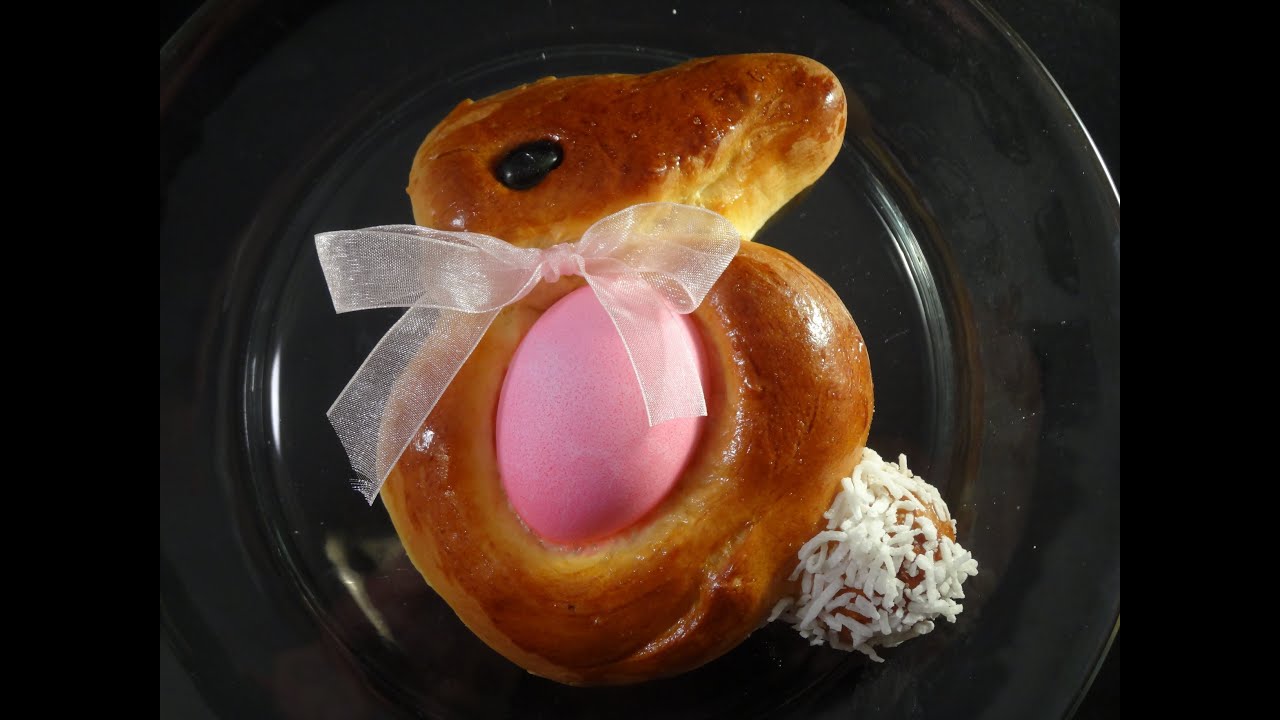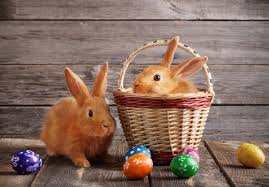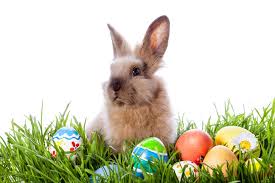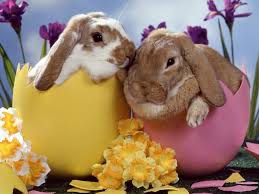Easter Bread Bunnies Easy Recipe
Easter Bread Bunnies
Easy Recipe

The Easter Bunny (also called the Easter Rabbit or Easter Hare) is a folkloric figure and symbol of Easter, depicted as a rabbit bringing Easter eggs.
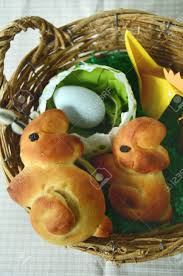
Originating among German Lutherans, the “Easter Hare” originally played the role of a judge, evaluating whether children were good or disobedient in behavior at the start of the season of Eastertide.
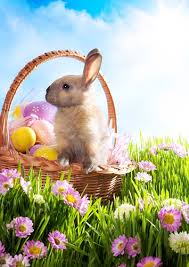

The Easter Bunny is sometimes depicted with clothes. In legend, the creature carries colored eggs in his basket, candy, and sometimes also toys to the homes of children. Similar to Santa Claus or the Christ kind, they both bring gifts to children on the night before their respective holidays. The custom was first mentioned in Georg Franck von Franckenau‘s De ovis paschalibus (‘About Easter Eggs’) in 1682, referring to a German tradition of an Easter Hare bringing Easter eggs for the children.
The hare was a popular motif in medieval church art. In ancient times, it was widely believed that the hare was a hermaphrodite. The idea that a hare could reproduce without loss of virginity led to an association with the Virgin Mary, with hares sometimes occurring in illuminated manuscripts and Northern European paintings of the Virgin and Christ Child. It may also have been associated with the Holy Trinity, as in the three hares motif.
Eggs, like rabbits and hares, are fertility symbols of antiquity. Since birds lay eggs and rabbits and hares give birth to large litters in the early spring, these became symbols of the rising fertility of the earth at the Vernal Equinox.
Rabbits and hares are both prolific breeders. Female hares can conceive a second litter of offspring while still pregnant with the first. This phenomenon is known as superfetation.
Lagomorphs mature sexually at an early age and can give birth to several litters a year (hence the saying, “to breed like rabbits” or “to breed like bunnies”). It is therefore not surprising that rabbits and hares should become fertility symbols, or that their springtime mating antics should enter into Easter folklore.
The recipe I used for the Easter bread is here: http://delayedreactionlounge.blogspot… The idea for making the bunny shapes was found in a Woman’s World magazine.
Ingredients
- 2 1/2 to 2 3/4 cups all-purpose flour (this is the total amount, it will be added gradually)
- 1/4 cup white sugar
- 1 teaspoon salt
- 1 quarter ounce (7g) package active dry yeast (about 2 1/4 tsp)
- 2/3 cup milk 2 tbsp butter
- You will need 9 eggs in total divided as follows -2 eggs (for the bread dough recipe) -6 eggs in the shell, raw and dyed if desire (to bake on the bunny buns) -1 egg beaten (for bread “glue” and for brushing on buns prior to baking)
Directions
Put the milk and butter into a small container and microwave until the milk is very warm and the butter has started to melt.
In a large bowl, stir together the yeast, sugar, salt and ONE cup of the flour.
Add the milk and butter to the flour mixture; stirring until it it nice and smooth.
Add two eggs and beat well. Add the remaining flour 1/2 cup at a time stirring after each addition. When the dough begins to clump together and “chase” the spoon around the bowl, turn it out onto a lightly floured surface and knead until smooth and elastic, about 8 minutes.
Add small amounts of flour to the counter as you knead the dough, you may or may not use all of the 2 3/4 cups of flour.
Keep adding small amounts until it is not longer sticking to your hands or counter.
Pour a little bit of oil in the bottom of the large bowl and rub it around to grease the bottom and sides, put the dough in the bowl and turn to coat with oil. Cover with a damp cloth and let rise in a warm place until doubled in size, about 1-2 hours depending on the temperature of the room. I put mine in the oven with the light on.
After the dough has doubled in size turn it out onto a lightly floured surface and punch it down. Roll the dough into 14″ rope, cut into 6 pieces.
Each piece will make a bunny. For each of the six pieces proceed as follows:
Roll one of the six pieces into a 10″ rope. Cut off 3″ for the bunny head and ears Cut off 1/2″ piece for bunny tail
Roll remaining piece (now 6 1/2 inches long) until it measures 8″ long. Shape this piece into a circle “glueing” the ends together with a bit of the beaten egg. Pinch together if necessary.
Place the circle on a greased baking sheet (or covered with silicone mat or parchment).
Shape the 3″ piece into head and ear and attach to circle (using beaten egg as glue if required) Shape the 1/2 ” piece into a ball (using beaten egg as glue if required) and attach it to circle as a tail.
Place bunnies at least 4 inches apart on baking sheet. Cover with damp towel and let rise for about an hour until almost doubled in size.
Using the end of a spoon or chopstick poke small hole where the eye should be. Brush each bunny all over with the beaten egg and gently snuggle the dyed raw eggs in the center of each bunny body.
Bake at 350F for about 20-25 minutes until golden brown all over. Let cool a bit and using honey, insert a jelly bean into the hole made for the eye and attach coconut to the tail.
These can be served still warm out of the oven or cold. Because of the eggs in these, they will have to be refrigerated if not eaten right away. **NOTE*** I mention in the video that the eggs were cooked. I just noticed today that the one egg in the braided “nest” that I made in the video, was very runny inside and not cooked enough. I’m guessing this is because it was surrounded by more bread that insulated the egg from the oven’s heat. All the eggs on the bunnies were completely cooked. Just make sure the egg is sitting on top of the bunny and only pushed in slightly.

